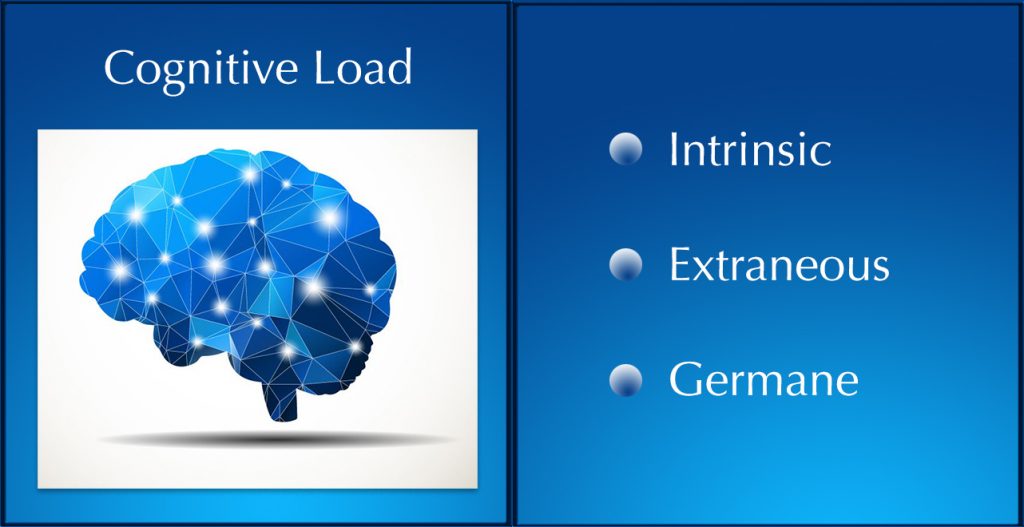Sources of Cognitive Load — from learningscientists.org
Excerpt:
Cognitive Load Theory is an influential theory from educational psychology that describes how various factors affect our ability to use our working memory resources. We’ve done a digest about cognitive load theory here and talked about it here and here, but haven’t provided an overview of the theory so I want to give an overview here.
…
Cognitive load theory provides useful and dynamic model for how many different factors affect working memory and learning. Hopefully this post provides a useful overview of some of the main components of cognitive load!
From DSC:
Along these lines, a while back I put together a video regarding cognitive load. It addresses at least two main questions:
- What is cognitive load?
- Why should I care about it?
How do I put it into practice?
- Simplify the explanations of what you’re presenting as much as possible and break down complex tasks into smaller parts
- Don’t place a large amount of text on a slide and then talk about it at the same time — doing so requires much more processing than most people can deal with.
- Consider creating two versions of your PowerPoint files:
- A text-light version that can be used for presenting that content to students
- A text-heavy version — which can be posted to your LMS for the learners to go through at their own pace — and without trying to process so much information (voice and text, for example) at one time.
- Design-wise:
- Don’t use decorative graphics — everything on a slide should be there for a reason
- Don’t use too many fonts or colors — this can be distracting
- Don’t use background music when you are trying to explain something










